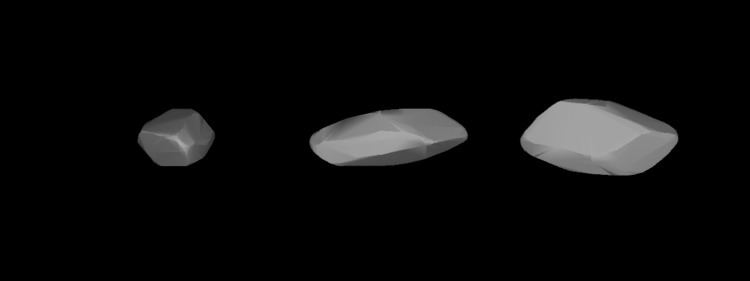Discovery date 12 October 1971 Aphelion 2.4474 AU Orbits Sun Asteroid group Asteroid belt | MPC designation 2094 Magnitka Observation arc 74.73 yr (27,296 days) Discovered 12 October 1971 | |
 | ||
Alternative names 1971 TC2 · 1941 WK1951 WP · 1956 EB1964 TD · 1968 WE1977 FG Similar 2058 Róka, 2101 Adonis, Sun, 8 Flora | ||
2094 Magnitka, provisional designation 1971 TC2, is a Florian asteroid from the inner regions of the asteroid belt, approximately 12 kilometers in diameter. It was discovered on 12 October 1971, at and by the Crimean Astrophysical Observatory in Nauchnyj, on the Crimean peninsula. The discovery has not been attributed to an observing astronomer.
The S-type asteroid is a member of the Flora family of stony asteroids, one of the largest families of the main belt. It orbits the Sun at a distance of 2.0–2.4 AU once every 3 years and 4 months (1,218 days). Its orbit has an eccentricity of 0.10 and an inclination of 5° with respect to the ecliptic. It was first identified as 1941 WK at the Finnish Turku Observatory, extending the body's observation arc by 30 years prior to its official discovery observation.
In October 2006, two rotational light-curves for Magnitka were obtained from photometric observations by Petr Pravec at Ondřejov Observatory and by John Menke at his Menke Observatory, respectively. The light-curves gave a concurring rotation period of 6.11 hours with a brightness variation of 0.80 and 0.86 magnitude (U=3-/n.a.), respectively, indicating a non-spheroidal shape for Magnitka. A tentative light-curve, obtained by Pierre Antonini in March 2016, gave a period of 6.24 hours with an amplitude of 0.85 (U=2+).
According to the surveys carried out by the Infrared Astronomical Satellite IRAS, the Japanese Akari satellite, and NASA's Wide-field Infrared Survey Explorer with its subsequent NEOWISE mission, the asteroid measures between 9.9 and 12.7 kilometers in diameter and its surface has an albedo between 0.132. The Collaborative Asteroid Lightcurve Link agrees with Pravec's revised thermal WISE data, taking an albedo of 0.12 and a diameter of 12.17 kilometers, based on an absolute magnitude of 12.49.
It was named for the city of Magnitogorsk, one of the largest centers of metallurgy of the former Soviet Union. The city is located at the far-east of the Ural Mountains in the Chelyabinsk Oblast region, also known for the spectacular air-burst of the Chelyabinsk meteor in 2013. Naming citation was published on 1 April 1980 (M.P.C. 5282).
